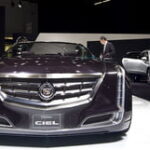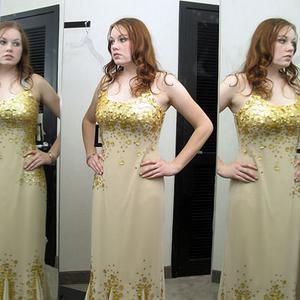Imagine that a large automaker bought Cadillac from GM. After owning the company for a couple of years, they slowly phased in a line of much cheaper looking and feeling cars, and introduced a bargain model or two. Then imagine that the company sat around scratching its head when customers started to leave, blaming it on market forces and the fact that people weren’t spending money on luxury items.
Change the product from cars to radio and you’ve just explained Clear Channel’s entry into Louisville radio.
Clear Channel has been a force in local radio since the mid 80’s, when it purchased the 50,000 Watt station WHAS (840-AM), and WAMZ (97.5 FM) from Clear Channel Communications in 1985, when the stations were put up for sale by the Bingham Family. The purchase wasn’t unwise, given the stations’ dominance in the local markets, with the two stations typically coming in 1st and 2nd in the local ratings books.
For a few years, Clear Channel seemed to leave WHAS untouched. WHAS was Louisville’s beacon to the rest of the country, broadcasting award winning news and talk, and even music to the rest of the country. WHAS’ news department rivaled many television stations, and was allowed to take up large sections of the drive time programming, with local reporters covering local stories, including expanded investigated and human interest coverage.
Its traffic department ran its own helicopter, which would often stay aloft for long periods after its typical drivetime usage if the conditions warranted it. Weather was provided by the meteorologists of WHAS TV, but the weather coverage remained exclusive, with their meteorologists doing live weather reports, and extended radio only coverage during severe weather.
Since then, the station’s been in a slow freefall. The first sign that things would be different was the replacment of local programming with Rush Limbaugh from the noon to 3 PM hour. The next changes appeared in its news department. The number of reporters began to dwindle, the time devoted to news began to shrink, and the long feature stories all but disappeared.
The next casualty was Rock And Roll Revival, an overnight music show hosted by a walking encyclopedia of rock and roll history, Joe Donovan. Donovan used his own extensive record collection to fill the overnight hours with the sounds, airchecks, and trivia about rock music from the 50’s, 60’s, and 70’s. He was gracelessly fired when Clear Channel decided they wanted to stop playing music on the station and focus on cheaper talk. If Clear Channel had any business sense, they would have left the show alone and offered Donovan the chance to go national with a syndicated program. Instead they replaced him with another local talk show, which they soon cancelled and replaced with Coast to Coast AM.
The changes then became more subtle. Their traffic department, which once famously used its helicopter to track the 1974 tornado that ripped through Louisville, was turned into a spot for advertisements. The advertisement became part of the traffic report, which ditched the helicopter and now relied on eyewitness reports, traffic cameras, and police reports to deliver traffic news that was about 30 minutes behind actual events, and seldom told you what you really needed to know (like how to avoid it.) The weather, which had previously been done by WHAS TV, and had a dedicated WHAS radio meterologist at all times, was replaced by WAVE 3, in a venture that made money for Clear Channel.
The problem with this became clear during our first bout of severe storms. WHAS had always been the source you turned to when your power went out during a major storm. Instead of having their own coverage, WHAS simply switched their feed to TV coverage. Maybe I just didn’t have a fancy enough radio, but hearing a meteorologist tell me to “follow the path of the radar” doesn’t quite cut it when I’m sitting in a darkened basement where I can’t even see my own shoes.
The last straw was a few weeks ago when Clear Channel decided it would get rid of a call-in show that had been around for decades, firing the blind host of the show, Joe Elliott. Rather than focus on presenting two extreme sides of an issue and having people fight it out, or encouraging callers who all shared the same point of view to call in, Elliott focused on subjects both controversial and mundane, and heard out people who didn’t support his opinion.
While I didn’t agree with everything Elliott believed in, Elliott’s show was a nice place to discuss and hear discussions of the local issues of the day. Clear Channel decided to can Elliott so it could air yet another syndicated show that involves a Conservative blowhard, Michael Savage.
As Clear Channel and companies like it take the one selling point of radio (it’s local nature) away, they strip away the one reason that most people listen. People can tell the difference between a quality product and one manufactured by the numbers. WHAS’ selling point was that you knew you could always turn to them when you needed local news, traffic, or weather and only be a few minutes away from a reliable report.
Now WHAS is merely another media outlet pushing the same information or less than other outlets available to you, and in a fashion no faster than what you can get elsewhere. While WHAS will probably be the dominant player in Louisville AM radio for years to come, simply through the strength of its signal, it will no longer attract the number of listeners it used to or command the local pride it used to instill.



